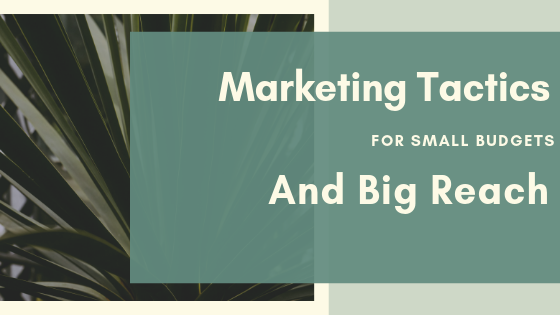Marketing Tactics for Small Budgets and Big Reach
When it comes to destination marketing, most tourism organizations are working with limited budgets, small staff size and big goals. In order to reach, engage and encourage large audiences to visit your destination, you have to be strategic with your marketing plan and spend. That means choosing marketing tactics that provide the biggest bang for your buck.

Public Relations
Public relations is a relatively cost-friendly way to reach large audiences. Time is spent creating relationships with media, writing and distributing press release and pitching stories to publications. The result is earned media – publicity gained through promotional efforts rather than paid.
Hosting Media and Influencers
In response to your efforts, you may have the opportunity to host media members, bloggers or influencers. Depending on the agreement, this would require your destination to cover the hosting costs – a combination of accommodations, meals, activities and travel expenses. In return for hosting, your destination will receive coverage in a publication, blog or on social media.
Public relations is smart investment for your budget for a couple of reasons.
- Instead of paying for an advertising, you are getting a blurb or article detailing your destination, telling your story and explaining your experiences. This narrative helps the reader picture themselves in your destination, which is more impactful (and memorable) than a print advertisement.
- In many instances, an article printed in a publication, posted on a website or shared on social media has a longer “shelf life” than a traditional advertisement. That means it has the opportunity to be seen by a larger audience.
If you’re curious to learn more about influencer marketing, check out our new eBook!
Email Marketing
Email marketing is a fast and low-cost way to market your destination to a list of engaged subscribers. It directly promotes an event, attraction or trail, etc. (Not to be confused with content marketing, see below.) Emails put your destination in front of your audience. They keep your subscribers up to date on new things taking place and encourage them to visit. (Or purchase a ticket, download a brochure, etc.)
Select an email marketing service to manage subscribers, create templates and schedule email campaigns. There a variety of email marketing services to choose from, many of which that come with a free subscription for basic service.
Choose subject lines that are both informative and entertaining. Those will grab subscribers’ attention and encourage them to open your email. Track open rates to see what works best with your audience. Keep your content brief and to the point. Provide enough details to interest readers and then include a call to action to direct them elsewhere.
Facebook Advertising
Facebook Ads are a great way to reach a large, targeted audience. The Audiences tab in Ads Manager allows you to create and save audiences based on specific demographics, locations and interests. You can also upload a custom list (think: email subscribers, website visitors, brochure requests) and target those individuals. Or use that list to find other people with similar characteristics across the country. Is your head already spinning? Learn how to get started with Facebook Ads.
Let’s be honest, Facebook will take as much money as you are willing to give. Be prepared to test a few campaigns to understand the best objectives, audiences and budgets for your goals. Once those pieces are in place, your dollars will work hard to give you results.
Content Marketing
Content marketing is a way to create and share content or materials that are beneficial or educational in nature, rather than promotional. Examples include videos, blog posts, social media posts, magazines and newsletters that provide value to the reader. These pieces share helpful information that the reader is looking for and interested in. In return, the reader becomes loyal to the brand.
Think about your key assets. What is your destination known for? Which questions do visitors ask most often? What are visitors most interested in? Start with the answers. Destinations known for outdoor activities – hiking, biking, kayaking – can produce a series of videos or blogs that answer common questions. Highlight what to wear or pack, the difficulty of the various trails and what flora or fauna one would see along the way.
When it comes to content marketing, it’s very important to stay away from promotional or sales-y speak. Quality content is what will keep readers coming back (even looking forward to your content!) and keep your brand on their minds.
Partnerships
Lastly, partnerships are a great way to combine budgets and efforts to collaborate on an initiative. We call this co-opetition, when perceived competitors collaborate on something to create bigger results than what either could achieve on their own.
Partnering with other organizations help stretch your dollars. This could mean joining a larger co-op program, creating your own initiative with a nearby destination or bringing similar stops together to form a trail. By tapping into everyone’s strengths, the individual lift and spend is smaller across the board. This makes the end goal easier to reach.
Related Posts
Collaboration Drives Sustainable Tourism
Sustainable tourism has growing importance in the world of travel and tourism. As destinations grow in popularity, they need to collaborate closely with residents, local…
